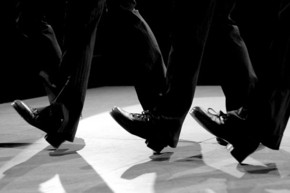
In a paper recently published by the Journal of New Music Research, Professor Rolf Inge Godøy and colleagues at the University of Oslo explore the theory behind the relationship between musical sound and body movement.
Previous studies have shown that people tend to perceive affinities between sound and body motion when experiencing music. The so-called ‘motor theory of perception’ claims these similarity relationships are deeply rooted in human cognition.
Read the full article online:
http://www.tandfonline.com/doi/full/10.1080/09298215.2016.1184689
According to the theory, in order to perceive something, we must actively simulate the motion associated with the sensory impressions we are trying to process. So, when we listen to music, we tend to mentally simulate the body movements that we believe have gone into producing the sound. Thus, our experience of a sound entails a mental image of a body motion.
Professor Godøy said: “Music-related motion, both sound producing and sound accompanying, leaves a trace in our minds and could be thought of as a kind of shape representation, one intimately linked to our experience of the salient features of musical sound. The basic notion here is that images of sound-producing and other sound-related motion are actively re-created in listening and in musical imagery, hence the idea that motor theory could be the basis for the similarities between sound and body movement when we experience music.”
Although links between musical sound and motion can be readily observed, the authors argue that a more systematic knowledge of them is required. To this end, they have used a wide range of research methods and approaches including a ‘sound-tracing’ experiment designed to explore the gestures people make to describe particular sounds.
Participants were played three-second sounds that varied in pitch and other musical qualities, and were asked to trace the sounds in the air using motion capture technology. The results indicated a fair amount of similarity among the participants‘ gestures, particularly between the vertical positioning of their hands and the pitch of the sound.
In general, some sound features such as rhythm and texture seem to be strongly related to movement while others, such as dissonance, have a weaker sound-motion relationship. As a result, the authors intend to focus their future work on researching large-scale statistical sound-motion feature correlations, providing us with more data on sound-motion similarity relationships in all kinds of musical experience.
About Taylor & Francis Group: Taylor & Francis Group partners with researchers, scholarly societies, universities and libraries worldwide to bring knowledge to life. As one of the world’s leading publishers of scholarly journals, books, ebooks and reference works our content spans all areas of Humanities, Social Sciences, Behavioural Sciences, Science, and Technology and Medicine.
From our network of offices in Oxford, New York, Philadelphia, Boca Raton, Boston, Melbourne, Singapore, Beijing, Tokyo, Stockholm, New Delhi and Johannesburg, Taylor & Francis staff provide local expertise and support to our editors, societies and authors and tailored, efficient customer service to our library colleagues.

